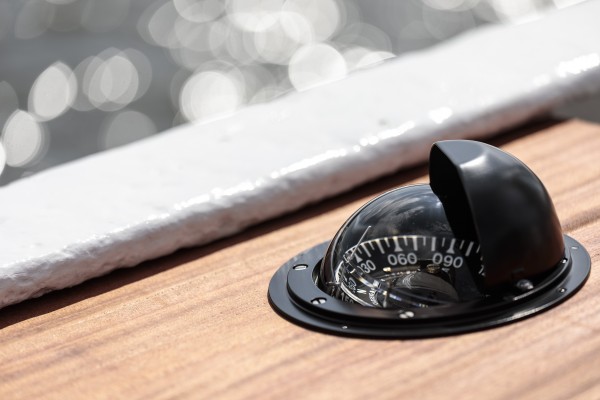Deviation
Deviation is the difference in heading between magnetic north and true north.
The closer the compass is located to potential sources of interference, the stronger is their negative influence.
Sources of interference can include e.g. other compasses, fire extinguishers, speakers or metal objects. The ship's own magnetic field also distracts the compass. To minimize the deviation caused by these interference sources, compasses can be compensated with different magnets. Furthermore, a deviation table should be prepared. From this table the value of the deviation valid for the current course can be used. Deviation values can be positive or negative and must be renewed each year for each sailing area.
The following describes how to prepare a deviation curve/table:
1. The search for a magnetic free zone
One sails a steady course under engine in an as windless environment as possible.
The fixed terrestical point (e.g. landmark) is sighted with a hand bearing compass and several full circles are sailed with the ship in a small radius.
The ship is in a magnetic free zone if the bearing result has the same values. Otherwise another sailing areas need to be used.
2. Determination of the deviation
The course of the ship will be changed in several directions while comparing the course values of the hand bearing compass and the main compass.
A deviation of the main compass is applicable if the course values deviate.
3. The deviation curve/table
The deviation curve/table is created by noting the deviation of the compass at each of these positions in steps of e.g. 30°. The values, which may be positive or negative, are now plotted on a deviation curve. A sinusoidal graph results from the values. If individual values deviate strongly, it is usually a calculation error. In this case, individual measurements would have to be repeated or additional courses between the already existing measuring points would have to be determined.
| Deviation curve with and without compensation | Deviation: Differences in course and areas |

